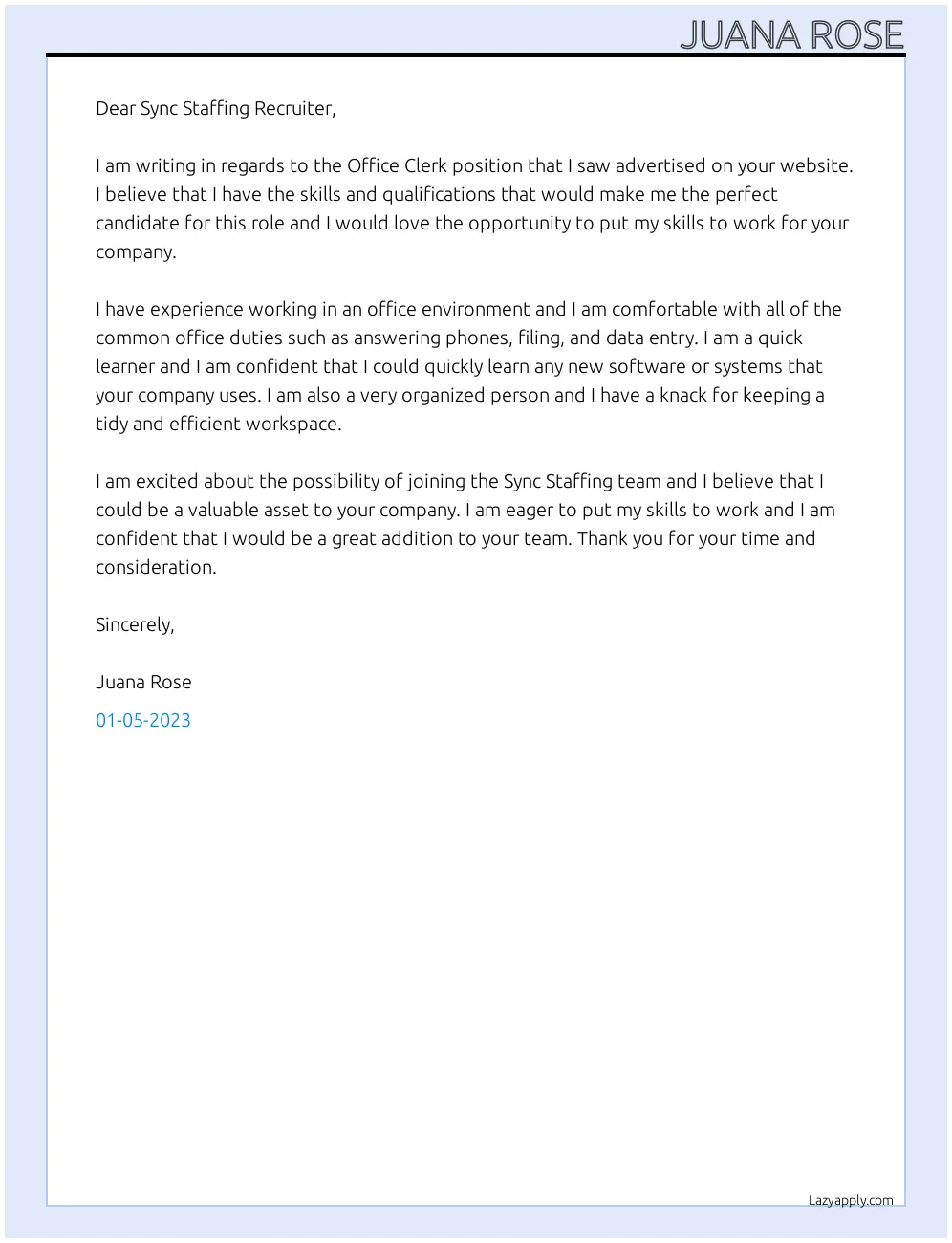Office Clerk Cover Letter: What to Include
A well-crafted office clerk cover letter is your first opportunity to make a positive impression on a potential employer. It’s a vital component of your job application, complementing your resume by providing a personalized introduction and showcasing how your skills and experience align with the specific requirements of the office clerk position. A compelling cover letter demonstrates your interest, highlights your qualifications, and encourages the hiring manager to read your resume. By following these guidelines, you can create a cover letter that captures attention and increases your chances of landing an interview and securing the office clerk position. Remember, this isn’t just a formality; it’s your chance to shine.
Contact Information & Date
Begin your cover letter with your contact information, including your full name, address, phone number, and email address. This ensures the hiring manager can easily reach you. Directly below your contact information, include the date you are sending the letter. Formatting this correctly provides a professional look. Ensure all details are accurate and up-to-date. A mistake here can send a wrong signal about your attention to detail. Always double-check your email address for typos. The date indicates when you are submitting your application and is a standard element of all professional cover letters, contributing to a polished and organized presentation.
Hiring Manager Information
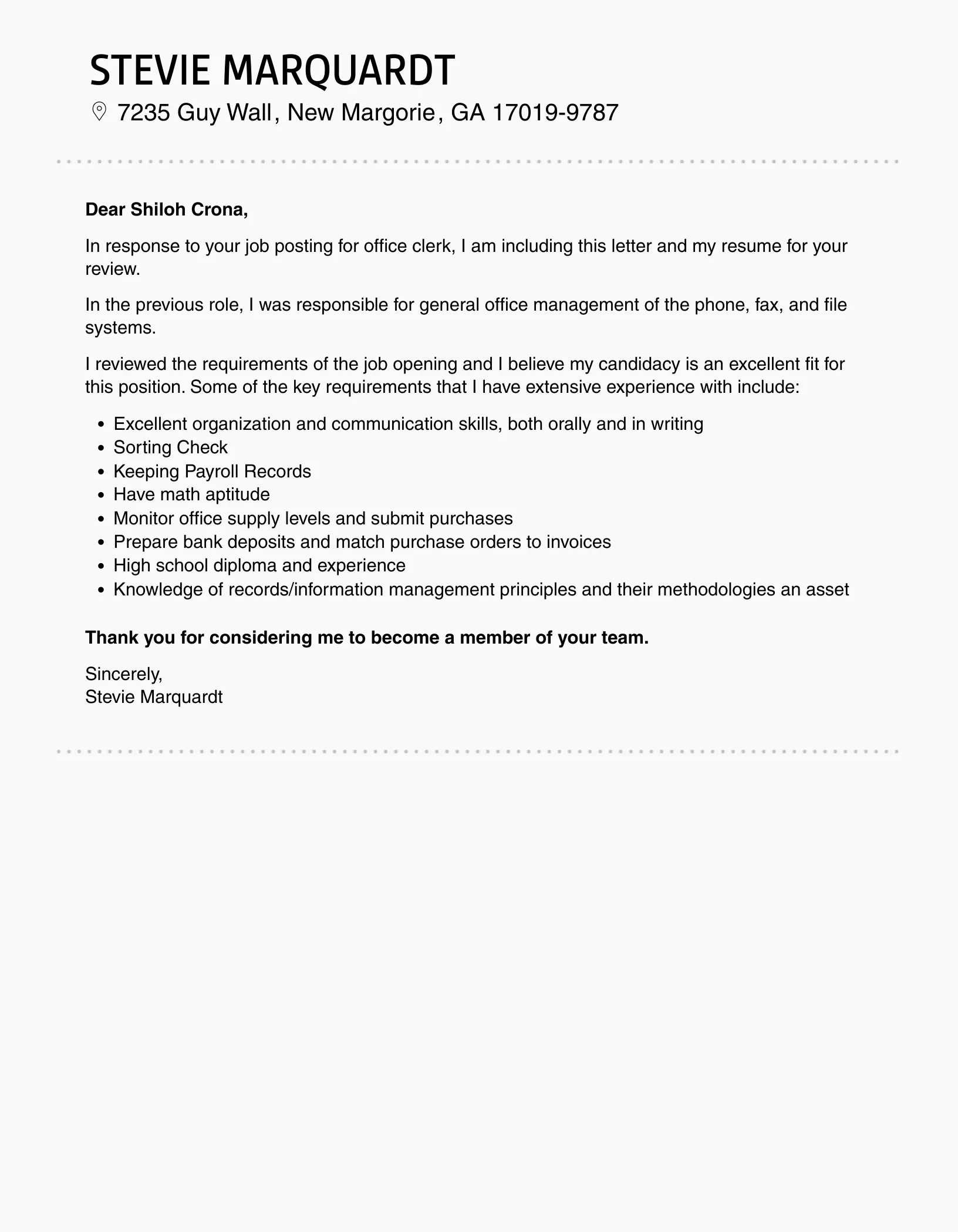
If possible, address your cover letter to a specific person. Research the company and identify the hiring manager or the person responsible for reviewing applications. Addressing the letter to a specific individual demonstrates that you have taken the time to learn about the company and shows initiative. If you are unable to find a name, use a professional title like ‘Hiring Manager’ or ‘Recruiting Team.’ This personalized touch significantly increases the impact of your letter. If you find a name, double-check the spelling and the correct title. This attention to detail showcases your professionalism and commitment.
Professional Salutation
Use a professional salutation, such as ‘Dear Mr./Ms./Mx. [Last Name]’ if you know the hiring manager’s name. If you are unsure of the name, use a general greeting like ‘Dear Hiring Manager’ or ‘Dear [Company Name] Recruiting Team.’ Avoid overly casual greetings. The salutation sets the tone for your letter and is your first chance to project professionalism. Always use the correct title and spelling of the hiring manager’s name. This ensures that you have made the initial impression positively. Correct grammar and a professional tone set the stage for the rest of your cover letter.
Opening Paragraph Emphasizing Interest
In the opening paragraph, clearly state the position you are applying for and how you learned about the opportunity. Express your enthusiasm for the role and the company. Briefly mention what initially attracted you to the office clerk position and why you believe you are a good fit. Demonstrate genuine interest by highlighting the specific aspects of the job that resonate with you. Show that you’ve researched the company and understand their mission or values. This section aims to capture the reader’s attention and encourage them to continue reading. Your opening paragraph should be concise, enthusiastic, and tailored to the specific job posting and company. Focus on why you’re excited and qualified for the role.
Body Paragraphs Highlighting Skills
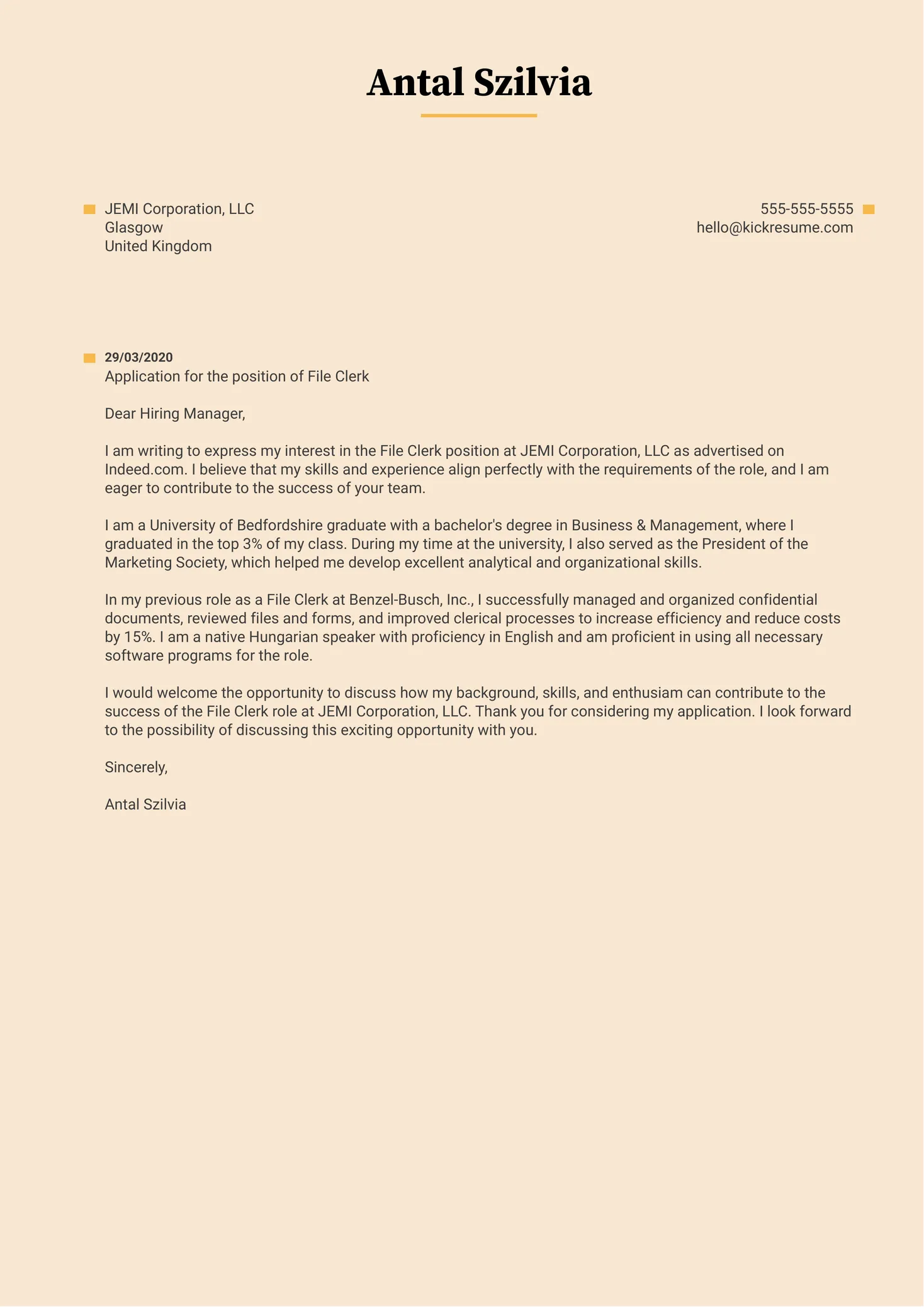
The body paragraphs are where you showcase your relevant skills and experience. Tailor these paragraphs to align with the requirements outlined in the job description. Provide specific examples of how your skills and experiences demonstrate your ability to succeed in the office clerk role. Use keywords from the job posting to demonstrate that you understand the company’s needs. Quantify your achievements whenever possible. This section is the core of your cover letter. Providing specific examples allows the reader to understand exactly how you can contribute to the company. Highlighting achievements and matching the skills with the job description makes your application stand out.
Detailing Relevant Skills and Experience
Elaborate on the skills and experiences that are directly relevant to the office clerk position. This could include experience with data entry, filing systems, phone etiquette, customer service, and proficiency in relevant software. Focus on the specific tasks and responsibilities you have handled in previous roles, emphasizing your ability to perform them effectively. Provide examples of how you have successfully managed administrative tasks, handled sensitive information, or worked with diverse teams. Show your past experience and provide some scenarios on how these skills will translate into success in this role. Highlight achievements like reducing errors, improving efficiency, or providing excellent customer service. This section should make it clear that you are well-prepared and a great fit for the role.
Showcasing Soft Skills Communication, Organization
Office clerk roles require strong soft skills like communication, organization, and attention to detail. In your cover letter, provide concrete examples of how you have demonstrated these skills. For instance, describe how you have effectively communicated with clients or colleagues, organized complex filing systems, or ensured accuracy in data entry. Show how you manage your time, stay organized, and prioritize tasks to meet deadlines. Use examples that clearly illustrate these skills in action. Employers value these skills as they ensure smooth office operations. Focus on demonstrating the ability to collaborate effectively and be a valuable member of the team.
Quantifying Achievements
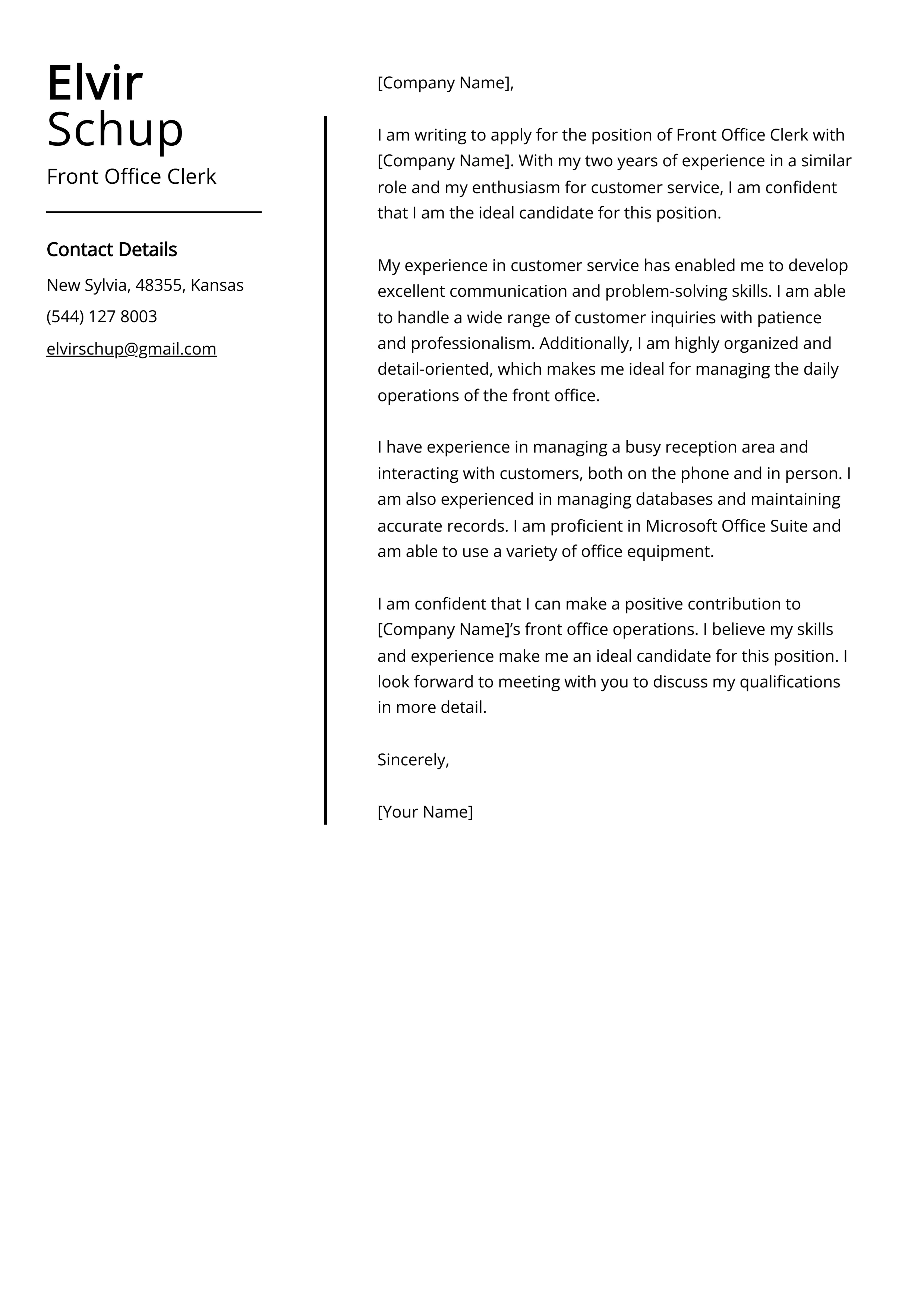
Whenever possible, quantify your achievements. This makes your accomplishments more impactful. Instead of saying ‘improved efficiency,’ state ‘increased office efficiency by 15%.’ Use numbers, percentages, and specific metrics to show the results of your work. This helps the hiring manager understand the value you can bring to the company. Quantifiable achievements make your cover letter much more compelling and demonstrate your ability to deliver results. Quantifying your achievements proves your ability to make a real impact in your past roles, and this increases your chances of getting the job. Provide some of your most significant accomplishments.
Closing Paragraph and Call to Action
In the closing paragraph, reiterate your interest in the position and the company. Thank the hiring manager for their time and consideration. Express your availability for an interview and provide your contact information again, if desired. Make a clear call to action by stating that you look forward to hearing from them. This provides a professional ending. Summarizing your key qualifications reinforces your suitability for the role. A strong closing paragraph reinforces your enthusiasm and provides an opportunity to make it easy for the hiring manager to contact you. This final paragraph must be professional and enthusiastic.
Formal Closing and Signature
Use a formal closing, such as ‘Sincerely,’ ‘Best regards,’ or ‘Yours sincerely.’ Leave space for your signature if you are printing and mailing a physical copy of your cover letter. If you are sending it electronically, you can simply type your name. A professional closing and signature are a sign of respect and ensure that your cover letter feels polished and complete. The formal closing sets the final tone of your letter. Proper signing procedures complete the application.
Formatting and Layout for your Cover Letter
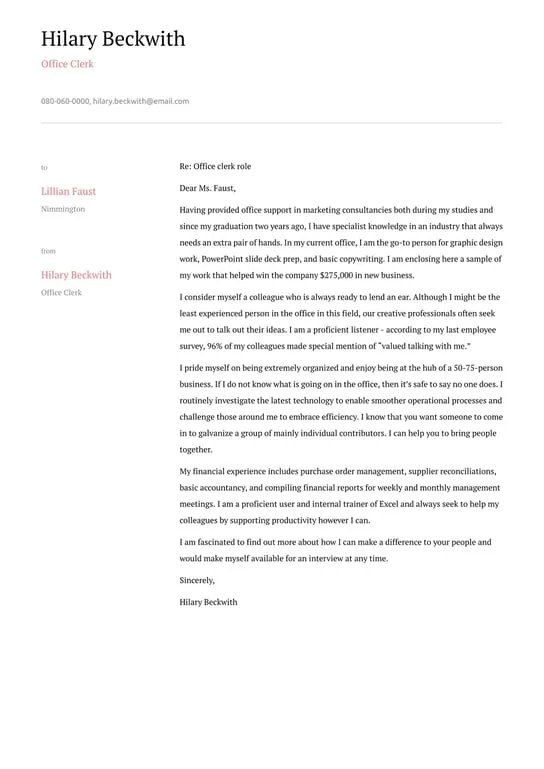
The format and layout of your cover letter are critical to making a positive first impression. A well-formatted cover letter is easy to read and demonstrates your attention to detail. Use a professional font, such as Times New Roman, Arial, or Calibri, with a font size between 10 and 12 points. Choose a font that is clear and easy on the eyes. Use standard 1-inch margins on all sides of the document. Maintain consistent spacing throughout the letter, using single spacing within paragraphs and double spacing between paragraphs. Ensure your cover letter is visually appealing and professional-looking. Proper formatting presents you as organized. Your layout makes a considerable difference to how you are perceived.
Choosing the Right Font and Size
Select a font that is easy to read and professionally appropriate. Avoid using overly decorative or unusual fonts, as they can distract from the content. Choose a font size that is easily readable, generally between 10 and 12 points. Ensure consistency in font and size throughout the letter. A consistent and appropriate font choice improves readability and makes your cover letter more professional. Your font choice is one of the initial impressions the hiring manager will have.
Proofreading and Editing
Proofread your cover letter carefully for any spelling, grammar, and punctuation errors. Errors can damage your credibility and suggest a lack of attention to detail. Use spell-check and grammar-check tools, but also read the letter aloud to catch any mistakes. Ask a friend or family member to review your cover letter as a second pair of eyes can often catch errors that you may have missed. Pay close attention to proper punctuation. Reviewing your cover letter multiple times helps catch errors and shows your attention to detail. The final step before submitting your application is to edit carefully. Proofreading is a crucial step in any job application.
Common Mistakes to Avoid
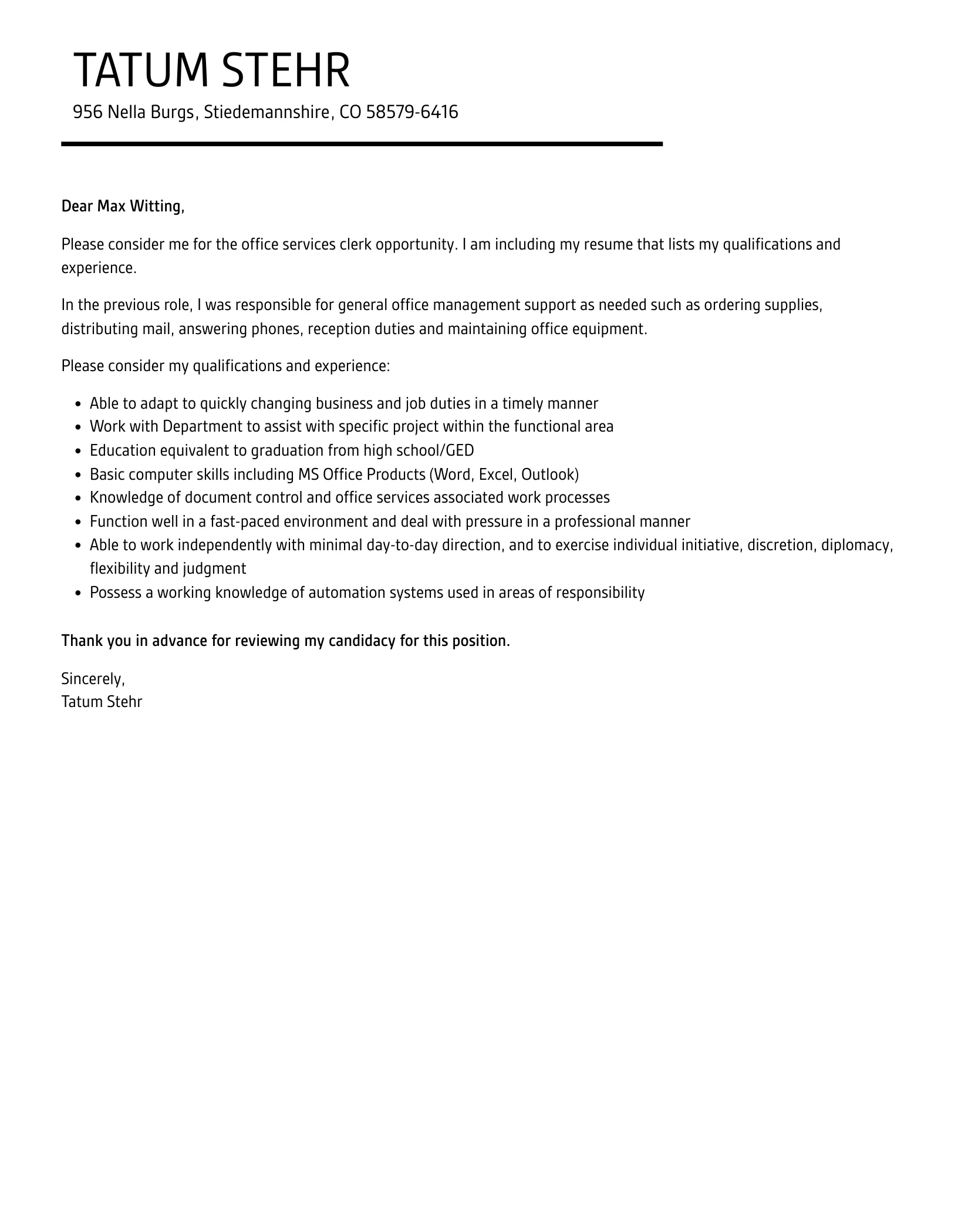
Avoiding common mistakes can significantly increase the effectiveness of your cover letter. Knowing what to avoid is just as important as knowing what to include. Being aware of these pitfalls and taking steps to avoid them helps you project a professional image. This will help you get noticed. Addressing these common issues increases your chances of standing out to the hiring manager. Carefully review each of these common cover letter mistakes.
Generic Language and Lack of Personalization
Avoid using generic language that could apply to any job or company. Tailor your cover letter to the specific office clerk position you are applying for and research the company to personalize your letter. Generic cover letters indicate a lack of interest or effort. Demonstrate your genuine interest in the company and the role by mentioning specific aspects of the job that appeal to you. Provide examples to showcase how your skills align with the requirements outlined in the job description. Using the company name and mentioning specific projects shows your genuine interest. Personalizing your cover letter sets you apart.
Typos and Grammatical Errors
Typos and grammatical errors can significantly undermine your credibility. Always proofread your cover letter carefully and use spell-check and grammar-check tools. Errors suggest a lack of attention to detail and can give the impression that you are not careful in your work. Reading your cover letter aloud can help you catch mistakes you might have missed. Proofreading is a critical step in ensuring your application is error-free. A single typo can be all it takes to make a bad first impression, so carefully proofread and edit your cover letter. Typos and grammatical errors can be a significant turnoff.
Focusing Only on Responsibilities, Not Achievements
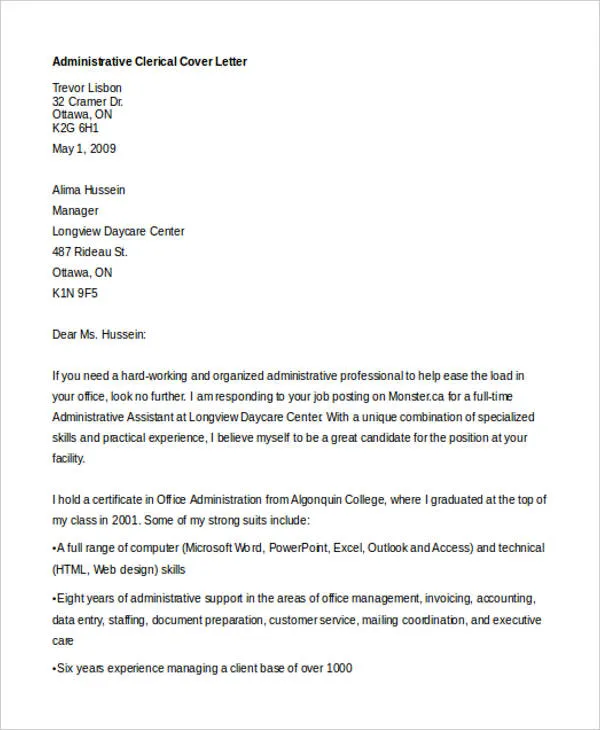
Focusing solely on your job responsibilities without highlighting your achievements can make your cover letter less impactful. Instead of simply listing your duties, provide specific examples of your accomplishments. Describe the results of your work and use quantifiable metrics to illustrate your achievements. Quantifying your achievements demonstrates your value to a potential employer. Use the STAR method (Situation, Task, Action, Result) to structure your examples. Focusing on achievements demonstrates your value and ability to make a real impact.
Office Clerk Cover Letter Examples
Reviewing office clerk cover letter examples can provide valuable insights into effective cover letter writing. Analyze various examples to understand how different applicants highlight their skills and experience. Pay attention to the structure, language, and tone used in successful cover letters. This provides you with a template to start. Use these examples as a starting point and customize them to fit your specific qualifications and the job description. Customize the provided templates to create a compelling and effective application. Seeing examples helps you visualize what a strong cover letter looks like, and it provides valuable inspiration. Tailoring the examples to reflect your experiences is critical.
